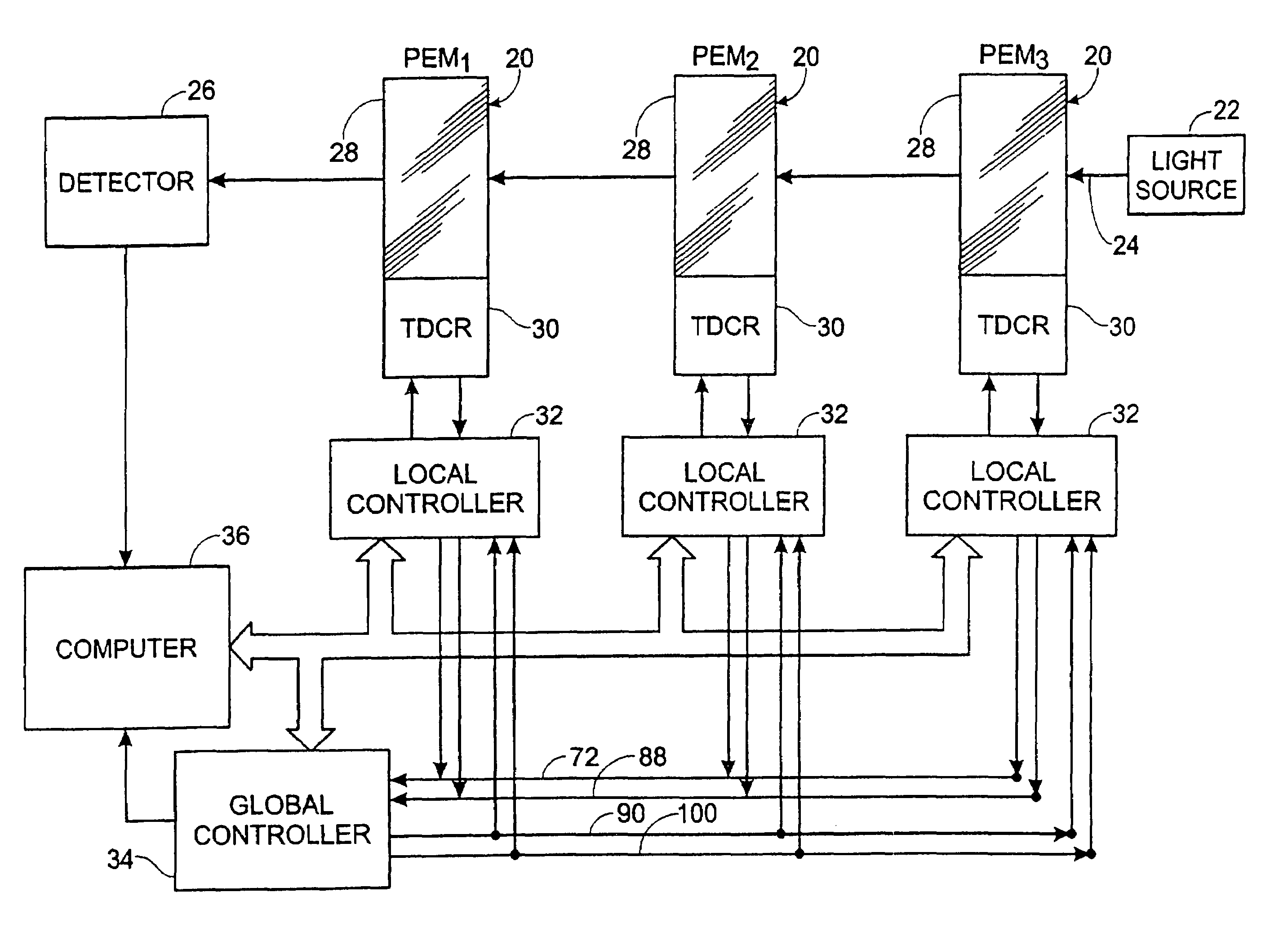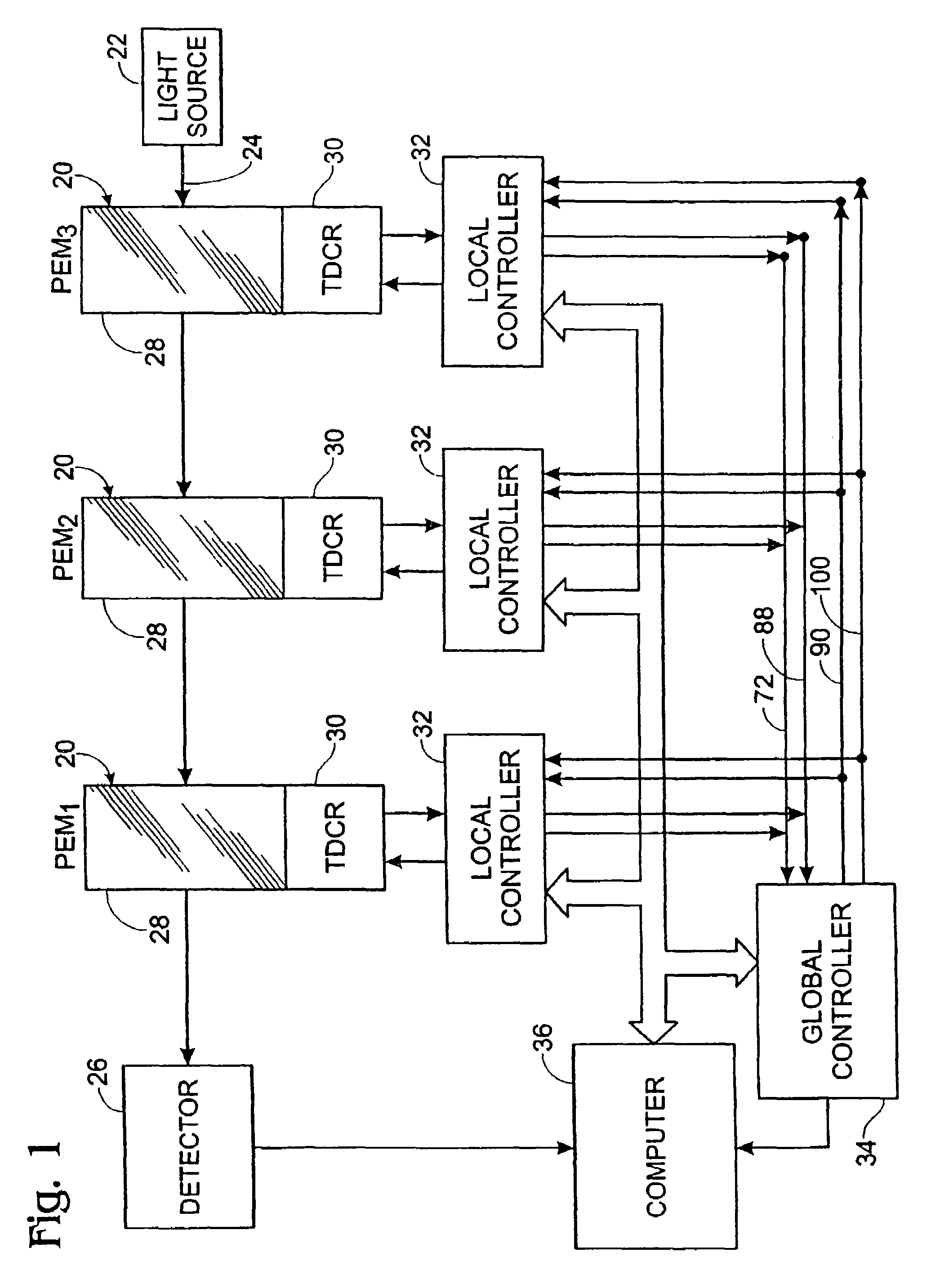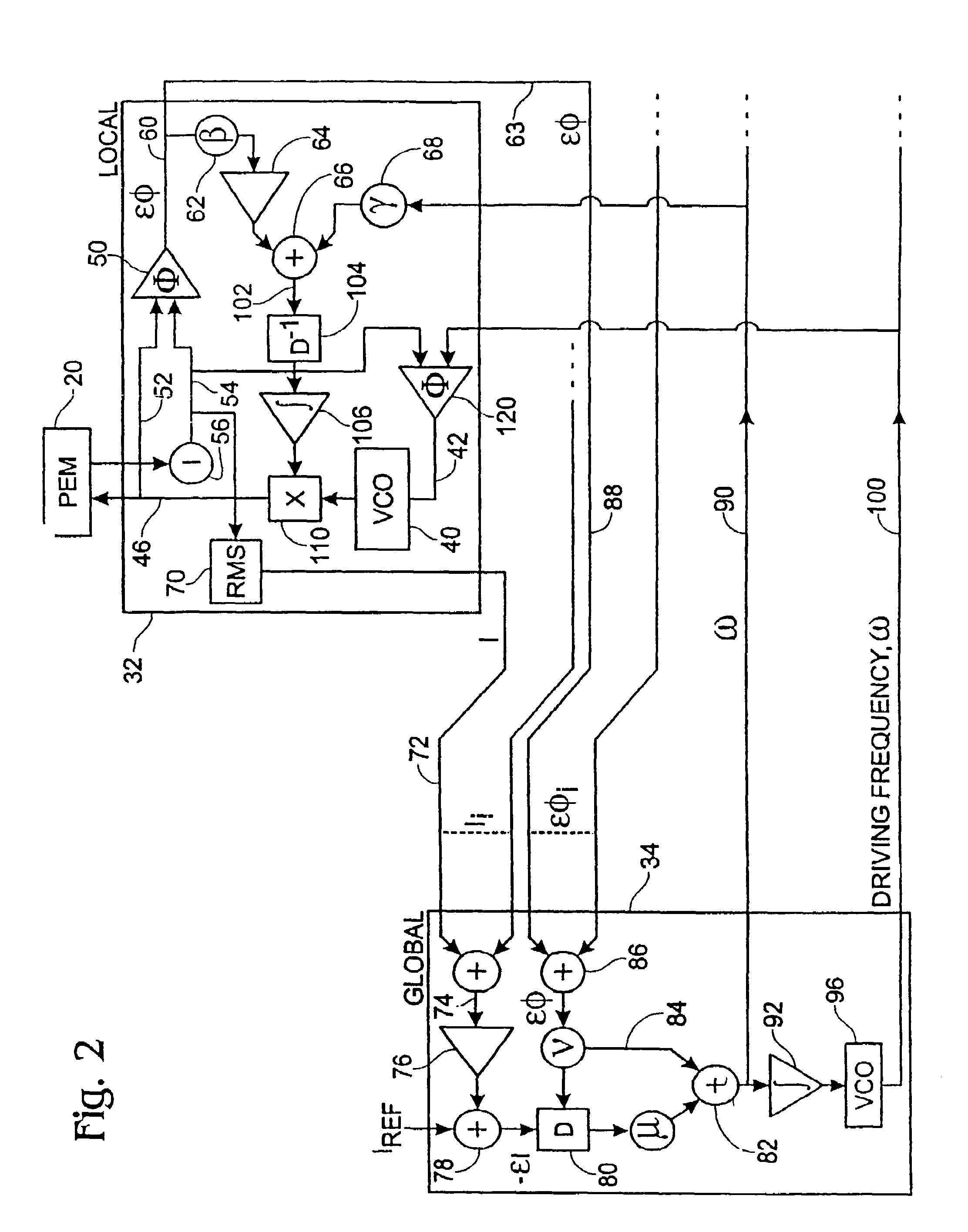Controlling resonant photoelastic modulators
a resonant photoelastic modulator and resonant technology, applied in the field of precise control of resonant photoelastic modulators, can solve the problems of uncontrolled oscillation frequency control by users, uncontrolled oscillation frequency control, and inability to precisely drive pems at resonance, so as to improve the performance of pems
- Summary
- Abstract
- Description
- Claims
- Application Information
AI Technical Summary
Benefits of technology
Problems solved by technology
Method used
Image
Examples
Embodiment Construction
[0025]The diagram of FIG. 1 depicts an exemplary system for controlling multiple photoelastic modulators (PEMs) in accordance with one aspect of the present invention. In this embodiment, a series of three PEMs 20 are depicted. The PEMs are aligned so that light from a source 22 travels in a beam 24 through each of the PEMs 20 to reach a detector 26. The optical aspects of the setup shown in FIG. 1 have been greatly simplified (polarizers, etc. being omitted) for the purposes of this description. Such a setup may be used, for example, in the Fourier Transform spectral analysis mentioned above.
[0026]The polarization of the light 24 is modulated by the PEMs to impart a retardation amplitude in the beam that reaches the detector. In this regard, the optical element 28 of each PEM is vibrated by an attached piezoelectric transducer 30, thereby to introduce into the optical element (such as fused silica) the oscillating birefringence discussed above (as well as the attendant contribution...
PUM
 Login to View More
Login to View More Abstract
Description
Claims
Application Information
 Login to View More
Login to View More - R&D
- Intellectual Property
- Life Sciences
- Materials
- Tech Scout
- Unparalleled Data Quality
- Higher Quality Content
- 60% Fewer Hallucinations
Browse by: Latest US Patents, China's latest patents, Technical Efficacy Thesaurus, Application Domain, Technology Topic, Popular Technical Reports.
© 2025 PatSnap. All rights reserved.Legal|Privacy policy|Modern Slavery Act Transparency Statement|Sitemap|About US| Contact US: help@patsnap.com



